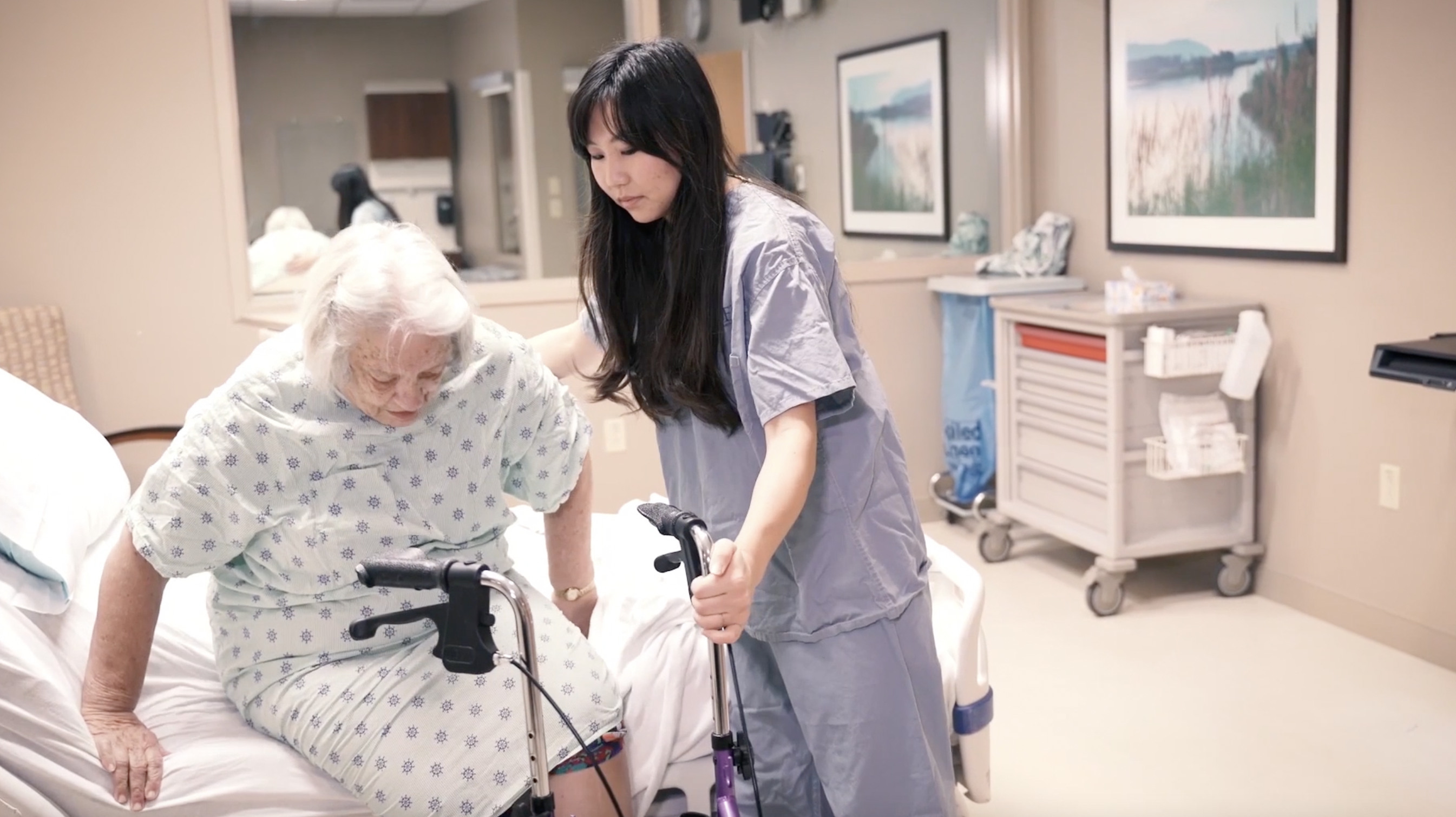Falls in hospital care happen frequently—too frequently. According to the Agency for Healthcare Research and Quality, 700,000 to 1 million hospitalized patients fall every year. Why does this happen so often? As with anything as unpredictable as a fall, hospital staff members aren’t psychic. They can know if a patient is at risk, but they have no way of perceiving when the fall will happen—and have no time to prepare for an intervention.
Bed Pads
With rapid communication becoming more reliable and convenient, alarm technology has been experimented with profusely as a preventative approach to patient falls. One of the most popular implementations of alarm technology used in hospitals today is in bed pads. When a patient attempts to get out of bed, the technology will sound a loud alarm to alert the staff. Bed pads also prevent the need for or use of restraints to keep patients in their beds. However, bed pads are known to give false alarms when the patient rolls over in their sleep, or simply adjusts themselves in bed. Detection accuracy for bed alarm devices can be as low as 15%. This can be aggravating for the patient who is merely trying to get a good night’s sleep, and can cause alarm fatigue for nurses who deal with hundreds of false alarms daily.
Another alarm technology fairly commonly used is a floor mat beside a patient’s bed. If a person puts any weight on the mat when attempting to leave their bed, a notification or loud noise alerts hospital staff immediately. The problem with this technology is that the patient has already left their bed when the alarm sounds, giving staff even less time to get to the room. Though technology like this could be helpful in a lucky case where the patient does not fall soon after they stand, chances are, it will still keep the staff running, while not truly helping the problem.
Other Solutions
You might be thinking, surely technology has advanced beyond pressure sensors. And communication in relation to falls should be more effective than a loud alarm that may be unsettling for a patient, that the staff may or may not hear depending on the proximity of available nurses.
This where sitters come into play. Many hospitals will have a paid sitter for inpatient rooms where fall risk is higher to keep the patient safe. The problem is, sitters are expensive. E-sitters have been a successful option, where a person can watch a room surveillance-style using a video camera. E-sitters tend to cost less than an in-person sitter, but at the end of the day, they still present an hourly wage to the hospital, and communication could still be disrupted through human error.
When Seconds Count
One of the more effective technologies in place to reduce hospital falls is through motion or infrared detectors designed to predict body movements. With a solution like this, possibilities for communication become wide open. When an infrared detector can precisely predict body movements, an invaluable tool becomes available. Time. Many times, 15-30 seconds is the difference between a fall and prevention. With a sensor like this, accuracy can also improve drastically, sending less false alarms.
Imagine if these motion or infrared sensors were connected to devices, or smartphones, that nurses carried with them throughout the day. Just like a text message, the nurse could be notified instantaneously when the sensor predicts a bed exit. This also eliminates loud alarms and sounds that can become an annoyance to staff and patients. With a system like this, communication between nurses could also improve. If one nurse is preoccupied, then they could “decline” the alert, informing other staff that the alert still needs to be attended to. All of this communication could happen within seconds.
AI Prevents Falls
Maybe this sounds too good to be true. The truth is, it’s not. Our technology, VSTOne, does exactly what was just described. When a patient attempts a bed exit, the automated alert workflow notifies the assigned nurses and techs as well as the floor’s central console, all within one second. If there is no response to the alert, a contingency protocol escalates the alert to the rest of the team on that floor. Alerts are sent 30-65 before a bed exit. VSTOne in use has proven 98% detection accuracy and has lowered false alarms by 95%. And the best part is that our system is 100% HIPAA compliant. VSTOne keeps your patient’s physical health and privacy safe. With such efficient communication, less staff is necessary for more patients. A bed exit alert system like VSTOne could completely change the workflow in hospitals across the globe.


